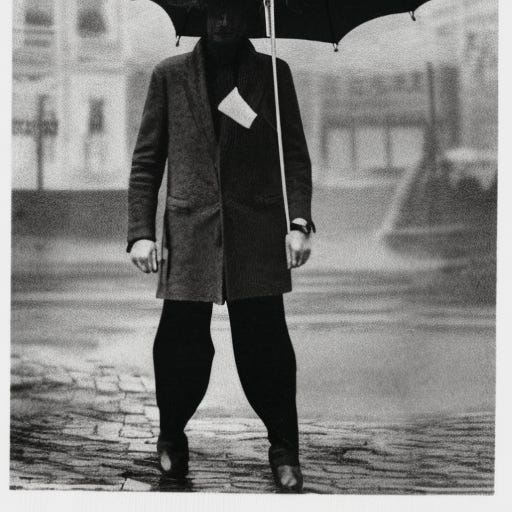
Vol. 1, No. 15 — Men with purses. There, I said it. Let’s not bury the lede here. Any chapter covering fashion in Europe has to address the most common stereotype that Americans have about European fashion. So is “the murse” a common sight on European streets? Indeed, it is. However, it’s probably not what you think.
European guys definitely own and carry more bags than their American counterparts. For the most part, the selection on display is similar to the US: backpacks, messenger bags, etc. But there is a distinctly European option as well. It’s about the size of a fanny pack but worn Rambo style like a bandolier. So the “murse” moniker isn’t really fair. Hardly any guys are walking around with a handheld bag.
These fanny-packs-as-sashes are even more ubiquitous in Basque Country, where both men and women wear them. I personally don’t own one but completely understand the practicality. Because most outings are done sans car, you need to carry a few more items when leaving home. That little bit of extra storage means you don’t have to walk around with stuffed pockets.
Where I live, it’s also wise to always leave your house armed both with sunglasses and an umbrella. As South Dakota is to temperature swings, this area is to storms. Because we’re tucked between some mountains and the ocean, huge pressure differences can build up and result in sudden, quite violent wind and rain. The umbrella is a must-have if there’s even the rumor of an inkling of precipitation, and even though they’ve become impressively small, they’re still not pocket friendly. More reason to join the small-bag crowd.
Before moving to Europe I had never owned an umbrella. I just did a quick tally. We currently have 11 umbrellas in various states of health.
While snow is a rarity here, in Germany it was more common. Whenever walking through some flurries there, I noticed a lot of umbrellas deployed on the street. What for? Well… it seems many Europeans treat snow like rain. It makes perfect sense, water is water. But it feels a bit like overkill. They’re friendly little fluffs of snow. Enjoy them.
It may have something to do with stocking caps not really being a thing when snow isn’t a way of life. Whereas I would wear a stocking cap through most of the cold months out of habit, the Germans preferred a scarf and umbrella.
Scarves are everywhere in Europe. I’m still easily identified as a foreigner for not wearing one during distinctly scarf-weather days. Likewise, if you see someone wearing flip-flops on a cloudy day, they’re probably American or Australian. Germans are easily identified around Europe by looking prepared for a treacherous hike in the middle of the city. If someone is sporting socks in sandals, they’re probably American or German. If you’re at the beach and a guy is wearing a Speedo, maybe Italian, maybe Eastern European, definitely confident. If you see a family strolling around in T-shirts during cold weather, definitely Nordic.
I knew shortly after arriving in Europe that some shocks were in store for me. One came during a break at the research lab. My boss, Vigo, walked in and sat down. Another guy in my project, Sebastian, took a sip of his coffee and said, “Hey, Vigo! Your collar is all messed up.” It was true. Vigo’s polo shirt had one half of the collar standing straight up alongside his face like Dracula’s cloak. Vigo took a glance and laughed. “Oh, thanks. At least you’re good enough to tell me.” He popped the other half of the collar up, double-checked both sides were precisely even and smooth, and got back to his pastry.
Midwestern Europe: Volume 1 with the first 52 entries in this series is available now on Amazon US, Spain, and Germany in hardcover, paperback, and Kindle formats!
They were made with much love. Pick up a copy, you won’t be disappointed.
If you’ve been enjoying these entries, please consider dropping by the product page and leaving a star rating based on what you’ve read here. Your investment of a minute or two would totally make my day! Many thanks.

